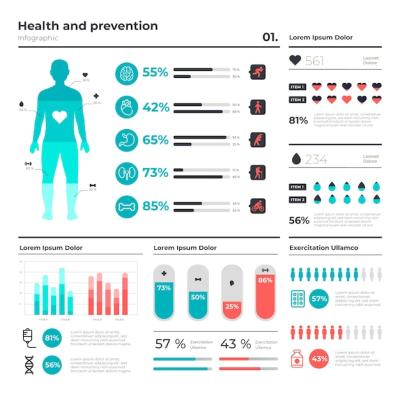Comparison of healthy lung and asthmatic lung – Free Vector Templates | Download Free Vector, Free Illustration
Are you interested in understanding the differences between a healthy lung and an asthmatic lung? Look no further! This article provides a comprehensive comparison of these two lungs, shedding light on the physiology and anatomy of the human respiratory system.
Physiology of Lungs
In order to comprehend the disparities between a healthy lung and an asthmatic lung, it is crucial to grasp the basic physiology of lungs. Lungs are vital organs located in the chest cavity, responsible for the exchange of oxygen and carbon dioxide during the breathing process.
Healthy Lung
A healthy lung is a marvel of nature. It functions optimally, ensuring efficient breathing and supplying sufficient oxygen to the body. Oxygen is inhaled through the airways, known as bronchi and bronchioles, which further branch into tiny air sacs called alveoli. These alveoli facilitate the exchange of oxygen and carbon dioxide, enabling the transportation of oxygen-rich blood to various body tissues.
Asthmatic Lung
On the other hand, an asthmatic lung faces certain abnormalities that hinder its smooth functioning. Asthma is a chronic respiratory condition characterized by inflammation and narrowing of the airways. This constriction makes it challenging for air to pass through, resulting in breathing difficulties and other symptoms.
Asthma can be triggered by various factors such as allergies, respiratory infections, and environmental irritants. During an asthmatic episode, the airways become swollen, leading to increased mucus production and narrowing of the bronchioles. This restricts airflow and causes the distinct wheezing sound often associated with asthma.
Anatomy of Lungs
Understanding the anatomical structure of healthy and asthmatic lungs can provide further insights into their differences.
Healthy Lung
A healthy lung consists of several components working harmoniously. The primary structures include the trachea, bronchi, bronchioles, and alveoli. The trachea, or windpipe, serves as the main airway connecting the mouth and nose to the lungs. It branches into the bronchi, which further divide into bronchioles that lead to the alveoli.
The alveoli, resembling tiny sacs, are surrounded by capillaries and act as the site of gas exchange. Here, oxygen is taken up by red blood cells while carbon dioxide is released from the bloodstream and expelled during exhalation.
Asthmatic Lung
In contrast, the anatomy of an asthmatic lung undergoes certain changes due to inflammation and airway constriction. The airways become narrowed, inhibiting the smooth flow of air. This reduction in airflow can lead to coughing, wheezing, and shortness of breath, which are distinctive symptoms of asthma.
In conclusion, understanding the differences between a healthy lung and an asthmatic lung is vital for comprehending the impact of asthma on the respiratory system. By exploring the physiology and anatomy of these lungs, we gain valuable insights into the mechanisms behind efficient breathing and the challenges faced by individuals with asthma.
- Physiology
- Anatomy
- Healthy Lung
- Asthmatic Lung
- Oxygen exchange
- Carbon dioxide exchange
- Airways
- Bronchi
- Bronchioles
- Alveoli
- Inflammation
- Airway constriction
- Respiratory system
- Respiratory condition
- Wheezing
- Trachea
- Windpipe
- Coughing
- Shortness of breath











